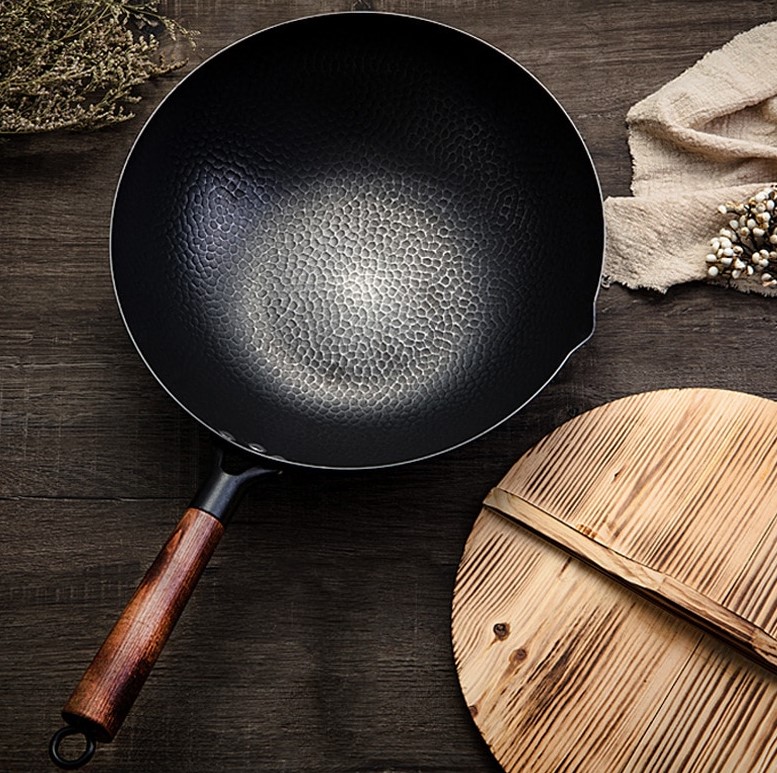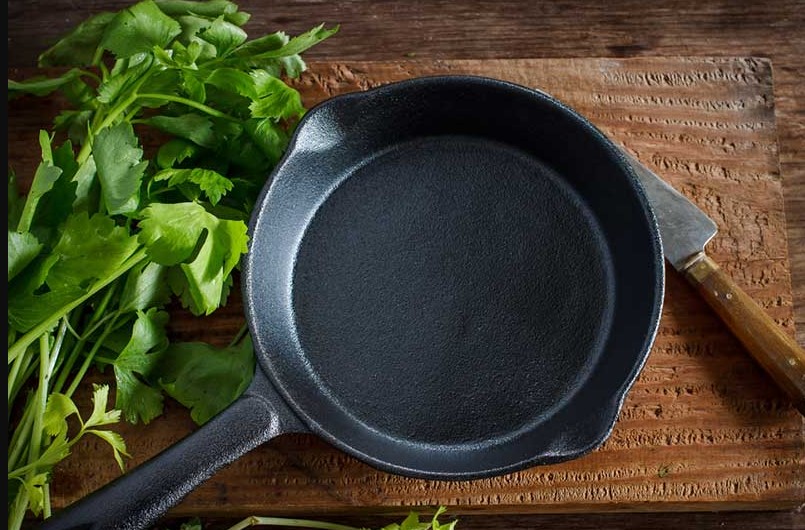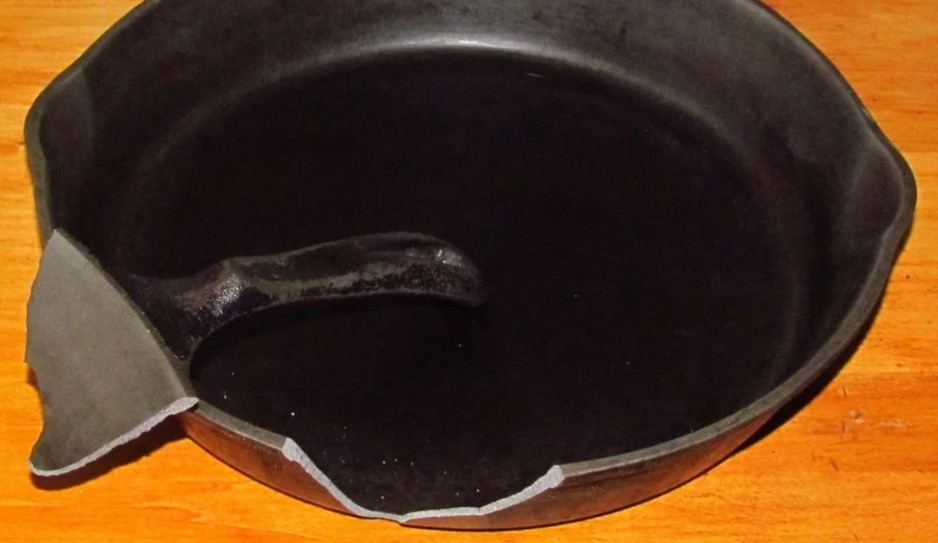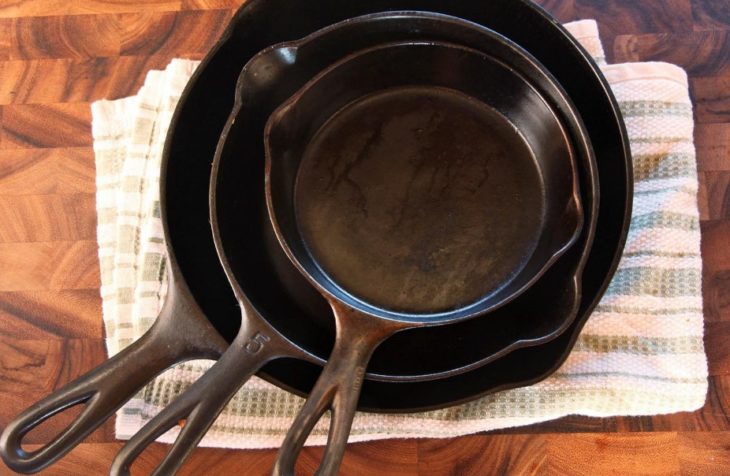Can You Ruin a Cast Iron Pan?
A cast-iron pan is ultimate cookware you can buy for your kitchen. Not only does it retain heat amazingly, but it also boosts the iron content in your food. A significant benefit that makes it worth it. However, most people shy away from buying cast iron pans for fear of the maintenance process.
It will take a lot of mishandling to damage a cast iron pan. You also have to consider other factors. For instance, if you buy a poorly made cast iron pan, then chances of it getting damaged are higher than that of a high quality cast iron pan.
Keep reading to find out what ruins cast iron pans and prevent your cast iron pans from getting damaged.
Signs that Your Cast Iron Pan is Ruined
For starters to tell if you pan is still working as it should, place it under running water and watch how it runs down the pan. If the pan is seasoned correctly, the water will flow out seamlessly. If the cast iron pan needs seasoning, the water will cling to parts of the cast iron pan.
So how do you tell if your pan is ruined? It will start rusting if it is not seasoned regularly. Additionally, it will begin to deposit flakes in your food, especially if it is enameled, and the coating starts peeling. Especially is you use metal utensils on it.
If your pan starts leaking, it is damaged as this means it has a crack or a hole in it. Another sign that your cast iron pan is damaged is if it imparts a weird flavor in your food. Cast iron tends to retain flavor, so any bad smells may be part of it, making all future meals made in it taste funny.

6 Easy Ways to Ruin Your Cast Iron Pan
Despite being very hardy, it is easy to damage a cast iron pan. The reason being that iron metal is not reinforced by blending it with other metals. Below are some mistakes that may ruin your cast iron pan.
Cooking strong-smelling foods in the pan
Cast iron metal is porous, which means it retains any intense flavors that get embedded in the meatal. As a result, if you use it for cooking strongly flavored foods such as fish or desserts with intense flavors, the pan will retain the smell and taint the flavor of foods cooked in that pan.
Not seasoning it regularly or drying it properly
Failing to season your pan regularly after use may cause it to lose its protective layer, which may leave it prone to corrosion by acidic foods and water.
This will then cause it to start rusting over time. You should always dry your cast iron pan thoroughly to prevent rusting.
Soaking it in water or storing food in it
Water is the best cleaning solution for your cast iron pan. But it is also its worst enemy. If you soak you cast iron pan, it will ruin the seasoned layer and cause it to rust. You should also not store foods in the pan as the moisture will also destroy its protective coating and damage it.
Washing it in your dishwasher or with soap
Like with smelly food or flavored food, the strong detergent will also sink into the metal and cause your food to taste soapy. Only use hot water to clean your cast iron pans. You can also use cast iron cleaning solutions or odorless natural agents such as baking soda.
Dropping it or hitting it hard
Cast iron metal is prone to cracking. Especially if it has a lower content of other trace metals, dropping your cast iron pan or hitting it against hard surfaces will cause it to break.
-
Overheating it
This can cause your cast iron pan to warp or crack, especially if you pour hot boiling water into it when the pan is extremely hot. Always let it cool down before you wash it. Additionally, use it under a gentle flame.

What Foods Should You Avoid Cooking on Cast Iron?
Acidic Foods
Acids will corrode the cast iron metal making traces of it to leech into your food, resulting in metallic tasting meals. The acids may also erode the protective layer and make it prone to rusting.
Avoid using it for cooking foods that contain tomatoes, lemon juice, lime juice, or any other acidic ingredients. And if you have to cook meals that are acidic in nature, use if for fast cooking recipes that will cook in thirty minutes or less.
Delicate meats and fish
Due to heats retention capabilities, using you cast iron pan to cook delicate foods that require lower temperatures may result in overcooked meat or fish. If you have to use the pan for cooking delicate meats like seafood, do so when the pan has not been heated, so the meat cooks before the pan gets hot.
-
Strongly flavored foods
As cast iron pans tend to retain intense flavors, avoid using it for cooking any strongly flavored foods such as tripe, smelly fish, or strongly scented desserts. As the preserved flavor will alter the taste of all future meals prepared in the pan.
Sticky foods
Before your pan is fully seasoned, avoid sticky foods such as eggs unless you do not mind spending time scraping food from the pan’s bottom. Once your pan is fully seasoned or you have mastered the art of scraping food from the pan, you can use it to cooky, sticky foods.
How to Clean a Cast Iron Pan
Fortunately, cleaning cast iron pans is less complicated than any other pan in your kitchen.
What you need:
- Hot water
- Food scraper
- Dishcloth
Steps
- Start by soaking the pan in hot water for a few minutes to loosen the food bits. You can also boil water in it to loosen the food stuck in the pan.
- Then scrape them off using the food scraper. If you do not have a scraper, you can use baking soda paste made from baking soda and water to scrub the pan. You can also use a coarse rock or sea salt.
- Rinse the pan with hot water until all oils have been removed from the pan. You can use a mild dish soap that is fragrance-free to clean it if it has too much grease and rinse it thoroughly.
- Place it on the stove until all the water dries completely. Or wipe it thoroughly using the dishcloth.
- If the pan’s protective layer has worn off, season it before you store it.
How to clean a rusty cast iron pan
What you need:
- Cast iron pan scrubber
- Mild detergent
- Seasoning oil
- Dishcloth
Steps
- Start by removing the pan. This can be done b using the cast iron scrapper or having one, a drill with a scrubber attachment.
- You can also bake the pan in the oven for a few hours to loosen the rust before scrubbing it off.
- Then proceed to wash the cast iron pan with mild fragrance-free dish soap.
- Dry it thoroughly.
- Then season it.
Check this too: How to Clean a Cast Iron Grill
How to season a cast iron pan
Seasoning a cast iron pan is as essential as applying moisturizer on your skin. You may do fine without it, but it plays a critical role in improving your skin’s vitality. Seasoning a cast iron pan makes it less sticky and less prone to rusting.
What you need:
- Seasoning oil
- Dishcloth or paper towel
Steps
- Apply the oil using a piece of cloth or tissue.
- Heat the pan on the stove until the oil soaks into the pan’s pores.
- Then use a dishcloth to wipe off the excess oil.
- The other school of thought requires heating the pan first before pouring oil into it. Either method will give you the desired result.
Ensure you use an odorless oil that is safe to eat.
Can You Get Sick from Using Cast Iron Pans?
No. Unless you suffer from a medical condition known as hemochromatosis, which leads to increased iron absorption, you are safe. It is tough to overdose on iron.
Even with an increased amount of iron in your food, the iron levels found after extensive research are still beneath the required daily intake.
Is it OK to Boil Water in Cast Iron
Yes. Boiling water in the pan is the best-recommended method of dislodging food stuck to the pan’s bottom. However, it gets rid of most of the seasoning hence exposing the metal to rusting. Ensure that you season your pan again before storing it. Since there is the extra seasoning step before storing, it is generally wise to avoid boiling water in your cast iron unless you intentionally want to dislodge something stuck at the pan’s bottom.
When Should I throw Away My Cast Iron Pan?
Cast iron pans have longer shelf lives than any other pans ever made. They can be passed down from generation to generation for more than fifty years. This is only true if they are taken care of and seasoned correctly regularly.
However, there are times that you need to throw in the towel and get rid of your pan. These instances include:

The pan is wobbly or warped.
If you cast iron pan no longer sits on the stove properly, it may be time to donate it to a metal recycling plant. Place it on an even flat surface before you ditch it. It may not be wobbly or be usable despite the warping. If it does not tilt too much, you may still be able to use it.
The pan is leaking or has a crack.
If you pan is leaking, this is a sign that it leaks. In some cases, the crack may be large enough for you to see with your naked eye. There is little you can do at this point to salvage it. Small fissure crack may not be a significant issue, but you risk harboring harmful bacteria that may contaminate your food.
Sometimes, it is possible to weld the leak and restore the pan to working condition.
The pan has a hole
Pans with holes were made in the past for non-cooking purposes. If you have a cast-iron pan with a hole in it, chances are it was made to be sued for industrial uses such as holding oil. Chuck said cast iron pan immediately as it is not safe for cooking.
You can still have a pro repair the home by welding in a plug but heat distribution might take a hit since the welding material might not have the same characteristics as the rest of the pan.
Conclusion
You will probably not be able to ruin your cast iron pan. Unless you are using your cast iron pan as a hammer or mishandling it, your chances of ruining it are next to nil. On the other hand, if you treat you cast iron pan kindly by cleaning it and maintaining it regularly, it will serve you for years to come.
